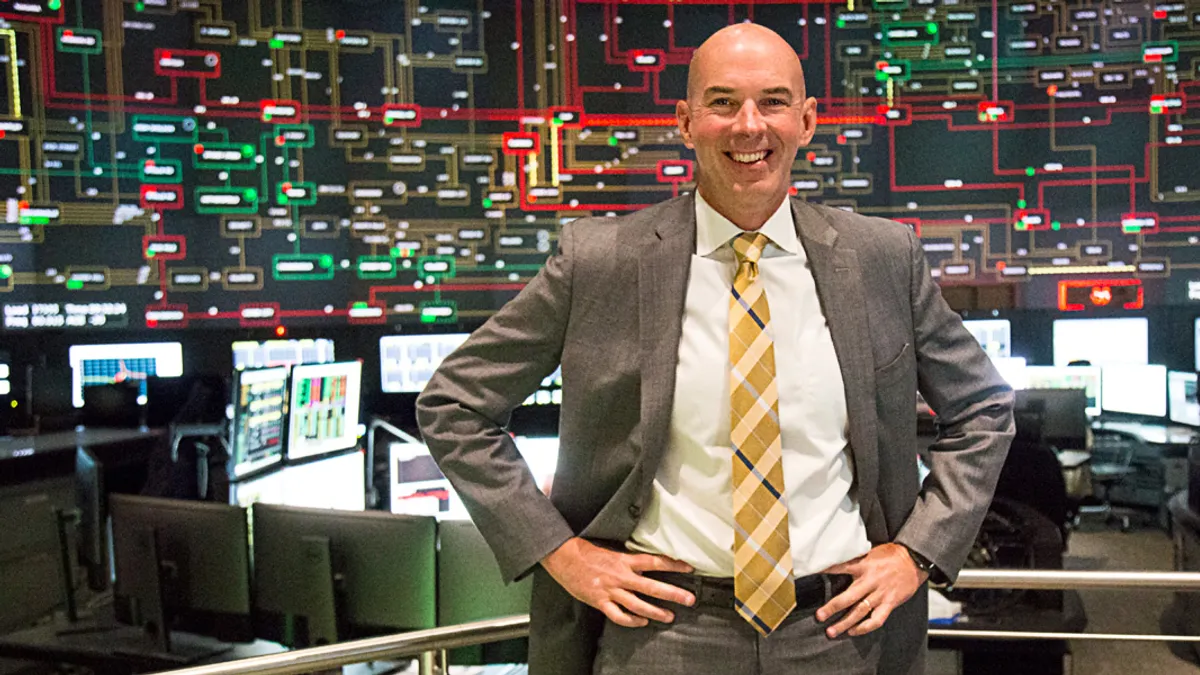Dive Brief:
- Emissions are down and electricity prices have hit historic lows in the New York Independent System Operator's (NYISO) markets, CEO Richard Dewey told reporters at a press conference on Wednesday. However, achieving the state's long-term emissions goals will require the use of new technology, he said.
- COVID-19 had a "dramatic downward impact" on energy demand Dewey said, but the state has recovered faster than expected, and electricity consumption already exceeds the ISO's forecasts for 2021.
- Multiple transmission projects, some already under construction, will improve New York's ability to move wind and solar energy from the northwest of the state to population centers in the southeast, Dewey said. But wind and solar alone cannot satisfy the state's projected demand long-term, he said.
Dive Insight:
Upcoming transmission projects and the possibility of offshore wind development will help to even out the availability of carbon-free electricity in New York state, Dewey told reporters on Wednesday. But without an alternative to natural gas, Dewey said he was uncertain how the ISO will achieve zero emission by 2040.
"The way we look at it, with existing technologies — onshore wind, offshore wind, battery storage and solar — our modeling indicates that the 70% renewable target by 2030 is very achievable," Dewey said. "When we start looking at what 2040 looks like, you look at the performance of ... existing assets and the storage capabilities of existing battery technologies, and all our models suggest there are just enough days when the wind doesn't blow and the sun is shielded, and not enough battery storage to fill those gaps."
Dewey said NYISO is tracking the development of green hydrogen, carbon capture and sequestration, advanced nuclear and other potential solutions.
"I don't leave anything off the table," he said. "When you think about the variability of wind and solar and the current limits of storage, the problem of filling in some of these gaps is going to need to be addressed."
NYISO continues to make progress toward reducing emissions, and has already cut carbon emissions by 52% since 1999 by adding 12,739 MW of new generation and retiring 10,535 MW of less efficient generation, according to the annual NYISO Grid & Markets Report released on Wednesday. Carbon emissions increased slightly in 2020 due to changes in consumption and weather patterns, Dewey said.
Wholesale energy prices averaged $25.70/MWh in 2020, the lowest average on record in NYISO.
Dewey said NYISO is currently focused on evening out the distribution of renewable energy in the state. The majority of the state's renewable capacity is located in upstate New York, where 90% of the energy produced in 2020 was free of carbon emissions. Downstate New York, on the other hand, produced 77% of its energy in 2020 from fossil fuels. New transmission projects, including nearly $1.4 billion in upgrades currently under construction, will transfer renewable energy generated in the north and west to the population centers of New York City and Long Island, Dewey said.
Correction: A previous version of this story misidentified the percent of downstate New York's 2020 energy that came from fossil fuels and the amount of upstate New York's 2020 energy that came from carbon-free sources. The numbers have been updated.














